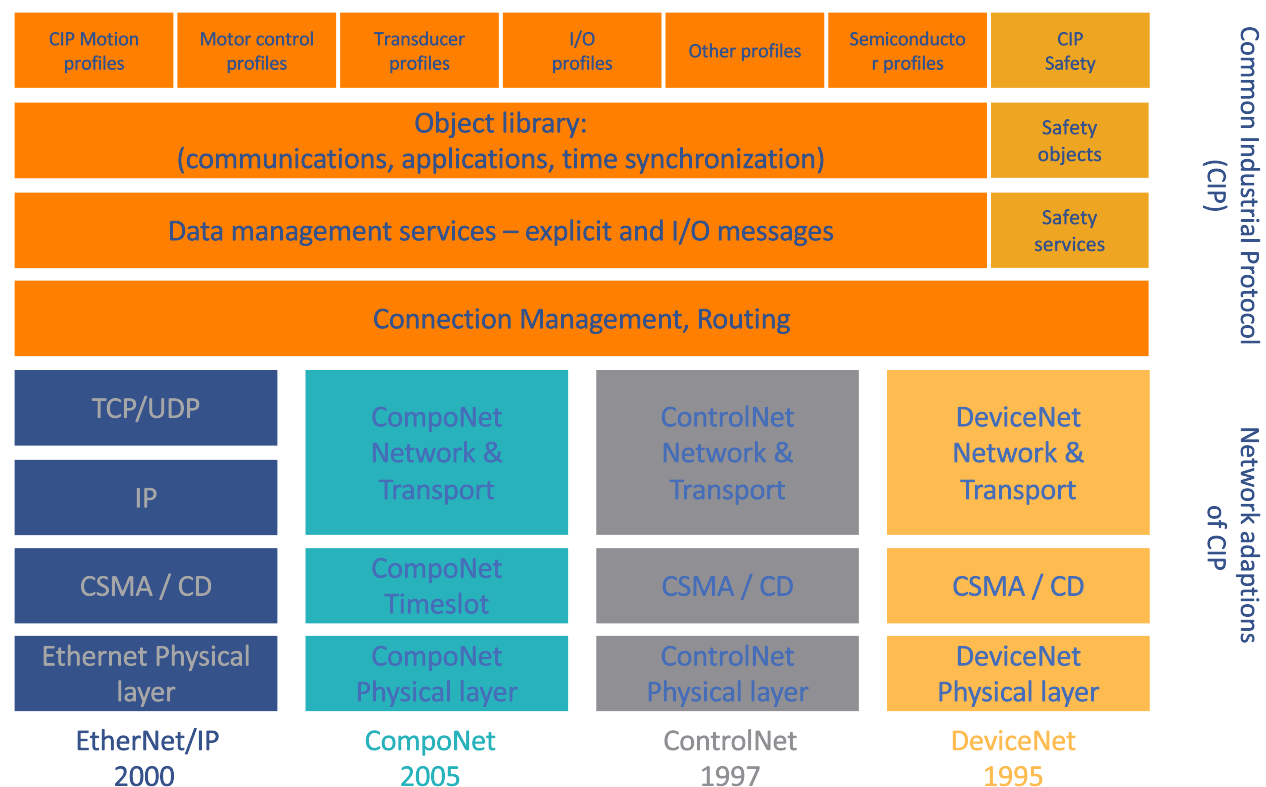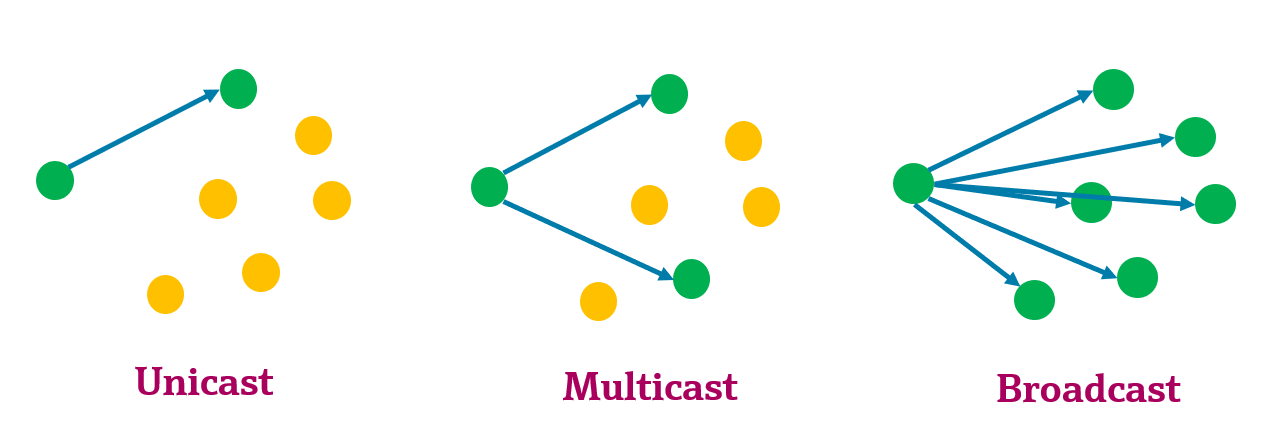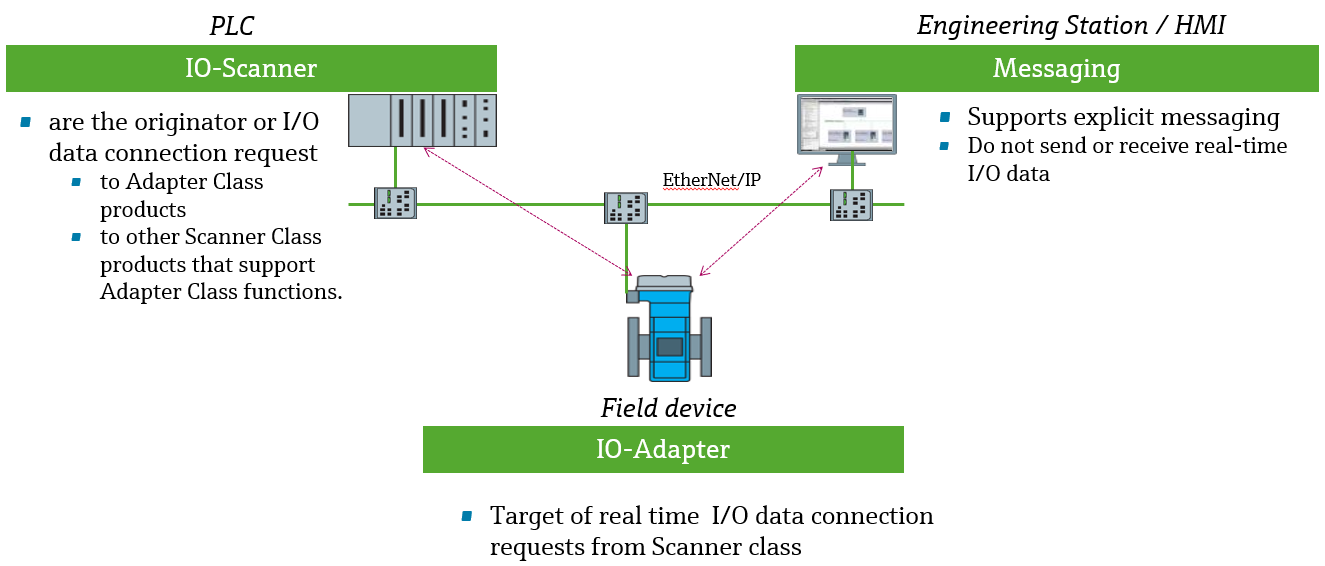Everything you need to know about EtherNet/IP and IIoT
Ethernet cables are becoming more prevalent in the field, bringing new possibilities for connectivity. Read on to learn how EtherNet/IP works, how it can benefit you, and why this network is essential to Industrial IoT (Internet of Things) applications.
Let me guess – you still have analog in your plant somewhere. Yes, most people in industrial automation do. But we’re finally seeing real movement away from it in applications and projects.
New solutions based on Ethernet and wireless communication are popping up everywhere. It’s okay if you still have doubts about them. I’ll do my best to end those here.
EtherNet/IP is one of the new networks based on the ethernet medium. Is it the best? As always, that depends on your situation and application.
So let’s go back to the basics, then discuss the possibilities you can uncover using EtherNet/IP devices within the IIoT realm. Kick back, grab a drink, and let’s dive into the Ethernet world.
What’s the difference between my Ethernet device at home and EtherNet/IP?
You probably see fewer Ethernet devices today, now that wireless networking has become popular, but they’re still a part of our lives. You may have them for your main internet connection or your smart TV.
But Ethernet devices in the industrial environment is a great evolution. EtherNet/IP has the famous IP in it, like what you use to connect to the internet, right? In this case, it stands for Industrial Protocol. Clever idea to use it here, huh?
Field instruments can use an Ethernet device with a cable and connector similar to what you have at home. Of course, an industrial application needs a more robust cable and connector to operate in more demanding environments than a home, but they’re still alike.
In short, you already know a lot about how these “new” industrial Ethernet devices work. Now that we’ve shown how this technology is close to the tech we already live with, let’s jump into the bits and bytes that make up the differences.
How did EtherNet/IP begin?
In the 90s, a small group of folks at ControlNet International Ltd., decided to get together and develop what would eventually become what we know as EtherNet/IP.
In 2000, they discovered they needed more support to continue the project. Back then, crowdfunding had not yet caught on, so they had to do things the old way.
They approached the Open DeviceNet Vendors Association (ODVA), an organization of automation manufacturers founded in 1995. ODVA agreed to a partnership to develop EtherNet/IP.
In 2009, the originators ceded control of the project to ODVA and its members. Now, the ODVA supports Common Industrial Protocol (CIP™), ControlNet®, CompoNet®, and DeviceNet®.
Beyond that, the organization confirms interoperability across vendors and systems. Interoperability is challenging, but ODVA promotes the adoption of commercial-off-the-shelf (COTS), unmodified Internet, and Ethernet technologies.
What is EtherNet/IP?
Based on CIP and following the Open Systems Interconnection (OSI) model as well as the standard TCP/UDP suite, EtherNet/IP is a flexible best-in-class Ethernet network and an open IEC standard. It allows you to connect field sensors, controllers, and control systems in the same network.
Its implementation is vast, so you’ll also find power controls (motors, drives, soft starters, etc.) and discrete controls (Safety I/IO, robots, etc.). Here we have the convergence of operational technology (OT) and information technology (IT).
Possibilities abound, as IP cameras, WiFi, and IP phones can also apply to the network. All of these features demonstrate that EtherNet/IP is more than ready for IIoT augmentation.
What’s the EtherNet/IP standard?
Rather than stuff the entire standard in here, I’ll list the primary points that you must know:
- IEEE 802.3: Standard, Ethernet, Precision Time Protocol (IEEE-1588)
- IEC: International Electrotechnical Commission – IEC 61158
- ODVA: Common Industrial Protocol (CIP)
- IETF: Internet Engineering Task Force, Standard Internet Protocol (IP)
Furthermore, the EtherNet/IP adds CIP to the session layer, but it also follows the OSI model protocol framework. Take a look at the graphic:

You can have many protocols in a network – HTTP, Modbus TCP, and more – but that doesn’t guarantee interoperability. For that, you can find gateways to translate for them.
Finally, you can have many ways to communicate. The physical layer allows wireless, copper cables, fiber, and more. Then the data link layer allows different standards, depending on the physical layer – for example, IEEE 802.3 (fiber), IEEE 802.3 or 802.1 (copper), and IEEE 802.11 (WiFi).
Even the new Advanced Physical Layer (APL) 2 wires only for power & communication, even in hazardous areas!
Super cool, right?
What are the EtherNet/IP topologies?
Ethernet technology experienced a real evolution from 10 Mbps, bus/tree topology, and half-duplex communication to 100 Mbps and 1 Gbps, full duplex, and switch/router-based star topology. This evolution gave Ethernet networks the ability to support critical industrial systems.
EtherNet/IP is an active infrastructure, with network segments using point-to-point connections in a star topology. The core of this topology is the interconnection of layer-2 and layer-3 switches. These switches support many point-to-point nodes.
The EtherNet/IP network can also support linear and single fault-tolerant ring topologies. For that, it uses embedded switches and Device Level Ring (DLR) technology. These alternative topologies can combine to optimize cable routing and communication layouts.
What do I really need to know about EtherNet/IP?
While we could go deep into the technical details of the EtherNet/IP network, we’ll keep this short and to the point by boiling down the main topics into three questions.
The answers will give you a good base to understand the network better.
1 – What’s the difference between TCP and UDP?
So EtherNet/IP is based on the TCP/UDP IP standard, but what do we get out of the alphabet soup? Well, TCP (transmission control protocol) provides reliable but slow data transfer in a unicast packet or frame. For instance, emails and web browsing use TCP connections and it's valuable for diagnostic data transmission while UDP is useful for I/O data in automation or control application..
Now, when we jump to UDP (user datagram protocol), we find a much faster connection, but it lacks a guarantee that the transferred data will make it to the receiver. Here, we have unicast, multicast and broadcast packets or frames, such as for streaming music or video.
2 – Can I use EtherNet/IP with other TCP/IP applications?
Yes, EtherNet/IP was developed to allow co-existence with other TCP/IP applications. Here are some examples of TCP/IP applications you’ll frequently see on the market:
- HTTP – hypertext transfer protocol
- SNMP – simple network management protocol
- Modbus/TCP
- OPC UA
3 – What are the basic components of EtherNet/IP?
The network is composed of crucial elements that allow communication among the devices and control system. EtherNet/IP has three classes that identify components and how they’re used.
- Scanner: The scanner class maps the network’s input and output variables in cycles, defined through the update time. Examples: PLCs and controllers
- Messaging: The messaging class supports explicit messaging rather than real-time I/O data. Examples: diagnostics, network configuration tools, SCADA & HMI Systems
- Adapter: The adapter class offers device-specific features in devices with EtherNet/IP protocol built in. Examples: sensors, valves, gateways
How does EtherNet/IP apply to IIoT solutions?
EtherNet/IP is digital communication, expanding our horizons for integration and data use. Following the NAMUR NOA concept, you can pull information from your network directly, using an edge device, and send it to various kinds of cloud services.
For instance, Netilion Ecosystem from Endress+Hauser now supports EtherNet/IP devices in several ways; you can use them in Analytics, Library, Health, and Value services, and third-party devices in Analytics and Library. Check out the official page to learn more.
These services enhance your data, providing you with the right information anywhere you are. Each service has relevant benefits for daily tasks; you can visit the services page to find out more about those.
IIoT services are an easy way to access relevant insights from your field instrumentation. They provide you with a comfortable and secure way to integrate with the cloud and step forward in your industry, advance to new levels in maintenance, enhance production, and so on.
If you learned something useful here, please share it with your colleagues on social media using the #Netilion tag.
Stay safe, and have a good one!






